An important nitrogen-fixing forage crop, red clover is also a significant medicinal plant with a long history as a blood cleanser. It is used for chronic constipation, skin complaints, chronic degenerative diseases and bronchitis. It has been included in many anti-cancer formulae, and helps balance hormone levels during the menopause, relieving symptoms such as hot flushes.
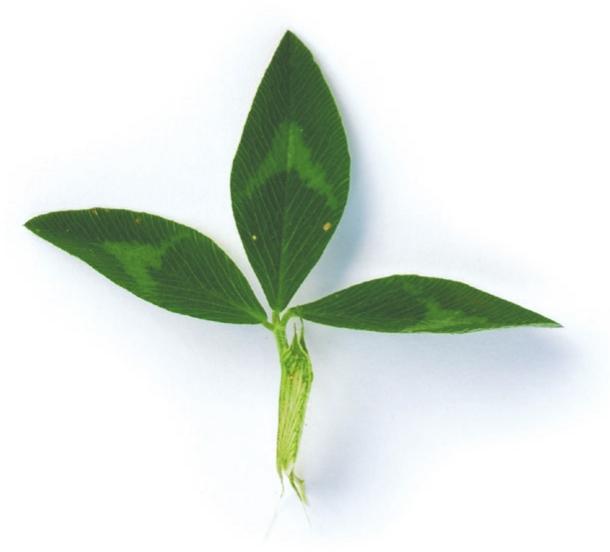
Fabaceae (Leguminosae) Pea family
Description: A common perennial with purplish-red flowers and a single pale chevron on the leaves.
Habitat: Grassland, road verges.
Distribution: Native and also cultivated throughout the British Isles and Europe; naturalised in the Americas, Australia and many other places.
Related species: The other common species is white clover (T. repens), with medicinal uses similar to those of red clover. There are over 200 species of clover worldwide.
Parts used: Flower heads with upper leaves, collected in early summer.
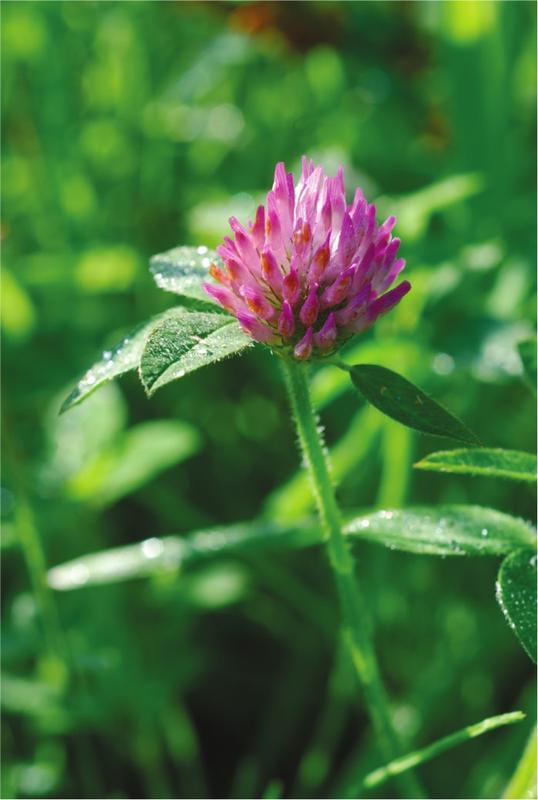
Clover or trefoil (three leaves) has a sacred past. It had significance for the Druids, and St Patrick was said to have used a clover in the meadow to explain the Trinity to Irish pagans. As befitted a plant of such fortunate lineage clover was worthy, with other holy herbs, to protect the virtuous against dark forces. One old rhyme went (in Sir Walter Scott’s 1815 version):
Trefoil, vervain, St John’s wort, dill,/Hinder witches of their will.
The oldest form of the name ‘clover’ we have is Anglo-Saxon cloeferwort, the last syllable being a marker of its herbal value (a ‘wort’ is a medicinal herb). The name may have derived from the Latin clava or club, probably the three-knotted club of Hercules; from the fourteenth century clover was the symbol of the card suit ‘clubs’.
In Tudor times the plant was called claver, which later became clover. The Irish national flower, the shamrock, means ‘small clover’, though it’s really an Oxalis.
In the Middle Ages legumes, like peas, beans and vetches, were grown as fodder and food crops. From the mid-seventeenth century farmers added red and white clover; only much later did scientists learn why it was so useful: clover fixed organic nitrogen in the soil in its root nodules. Clover remains an excellent hay (to be ‘in clover’ still means to have abundance).
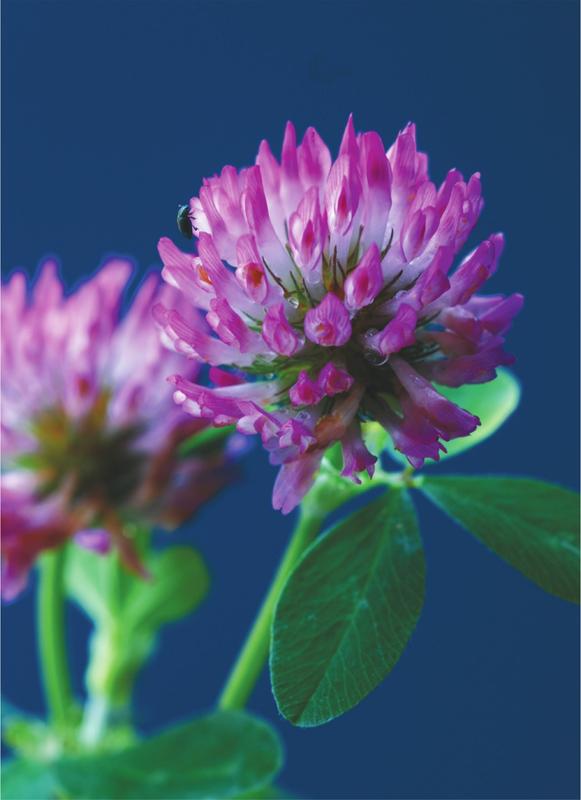
Also, clover is beloved of bees and yields wonderful honey (the white clover is superior), and the white form, with a mass of roots, gives a fine lawn – though clover lawns are currently unfashionable.
In terms of culinary uses, clover leaves and flowers can be eaten in salads, and the seeds soaked and sprouted. Clover wine is well-liked. The dried flowers are mixed with coltsfoot leaves as a herbal tobacco or used as a snuff.
Use red clover for…
The best-known use of all for clover is of course the luck of finding a rare four-leafed one. In some folk traditions, the three leaves represented faith, hope and charity (love), and the fourth was God’s grace; in everyday terms, it meant luck. Nowadays you can order a plastic-sealed lucky four-leaved clover online (some sites offer organically grown ones). Who gets the luck, one wonders – probably the seller.
Your luck may be more certain if you use clover herbally. Red clover works gently to improve elimination over a wide front, helping the body rid itself of toxins – it can help increase the flow of urine, move mucus out of the lungs, increase the flow of bile and act as a gentle laxative.
This slow and steady action plus its high content of trace minerals means that red clover is effective for a wide range of health problems, and is gentle enough for children. Clover is most effective when taken consistently for several months for chronic conditions such as skin problems.
Clover’s ability to remove waste products, along with a capacity to prevent the formation of abnormal cells, underlies its popular reputation for treating cancers, including breast, prostate and lymphatic forms. As with any claims for treating cancer, this has been controversial. One US pioneer of plant-based cancer remedies, Harry Hoxsey, had red clover as the main herb in his formula, and it has been used in many others.
Red clover’s soothing expectorant effect is beneficial in treatments for coughs and bronchitis, and it remains official in the British Herbal Pharmacopoeia as an anti-inflammatory.
Red clover’s ability to alleviate menopausal symptoms is related to its flavonoid content. Flavonoids are oestrogen-like plant chemicals (or phyto-oestrogens) that help maintain normal oestrogen levels during menopause, providing relief for hot flushes. However, red clover is safe to use and beneficial in cases of breast cancer through reduction of high oestrogen levels (see box).
Red clover itself does not have a blood-thinning effect but the coumarin it contains can convert to dicoumarol, which is a blood thinner, if the plants ferment on drying. If dried quickly, this will not occur, but clover should not be used in quantity by anyone taking blood-thinning medication.
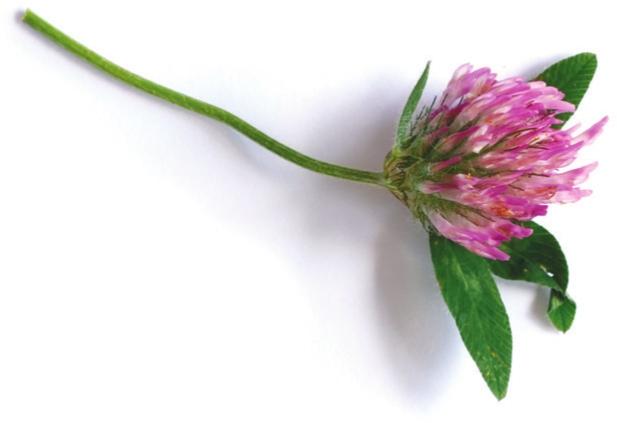
Phyto-oestrogens
Phyto-oestrogens can exert an oestrogenic effect in the body, which is useful in the menopause when oestrogen levels are low. What is less well known is the fact that they can also exert an anti-oestrogenic effect in the body.
This is because phyto-oestrogens have a weaker oestrogenic effect than oestrogens produced by the body, and both bind to oestrogen receptor sites. If oestrogen levels are high, the weaker plant oestrogens reduce the overall oestrogenic effect, which is one reason why red clover is beneficial in breast cancer treatment.
Harvesting red clover
Pick the flowers and top leaves in early summer (the flowers growing in autumn are not as sweet) when the morning dew has dried off. Choose newly opened pink flowers. Dry thoroughly, spreading them out on paper or trays, no more than one flowerhead deep, in a warm dry place away from direct sunlight. When fully dried they are crumbly to the touch. Store in glass bottles away from the light to maintain the red colour.
Red clover tea
Use 1 or 2 heaped teaspoons of dried red clover flowers per cup or mug of boiling water and allow to infuse for ten minutes. Strain and drink.
Dose: 3 or 4 cups a day. Can be taken by children. For chronic toxicity, constipation and skin problems this tea needs to be taken consistently over a period of five or six weeks, as the effect is cumulative. To help with hot flushes, it is best drunk cold at the first onset of a flush.
Red clover and curled dock tincture
Put roughly equal amounts of red clover blossom and chopped curled dock root in a jar, and pour in enough vodka to cover the herbs. Leave in a dark place for two weeks, then strain. Pour the liquid into clean bottles and label.
Dose: Half a teaspoon 2 to 3 times daily.
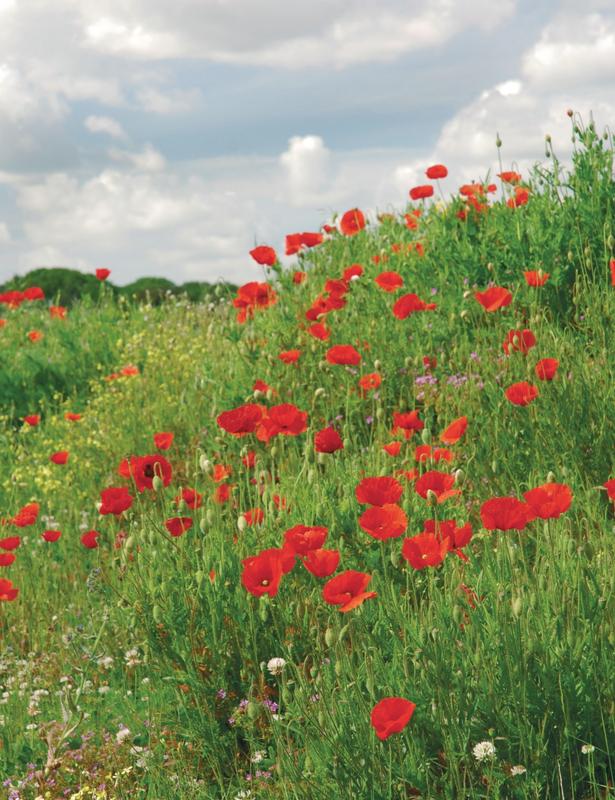
Red poppies